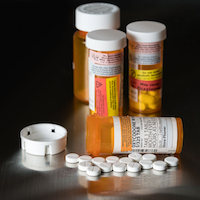Article
Opioids Overprescribed After Total Hip or Knee Arthroplasty
Author(s):
Policies must change to curb postoperative opioid overprescribing.

There was a substantial increase in the percentages of patients receiving opioids after total hip or total knee arthroplasty from 2014-2017.
There were no clinically meaningful improvements in postoperative pain level at discharge or at up to 2 months after surgery. The findings emphasized the need to monitor effectiveness of policies aimed at curbing postoperative opioid overprescribing.
Rahul Shah, BS, and colleagues examined rates of opioid prescribing and the level of pain control in patients who underwent total hip arthroplasty and total knee arthroplasty from 2014 to 2017. They used the Optum deidentified electronic health record (EHR) data set of more than 90 million patients from 38 hospital networks and 18 non-network hospitals in the US.
The team included patients who underwent total hip or total knee arthroplasty in an inpatient setting in the hospital networks. They analyzed whether patients were prescribed opioid from discharge to 60 days post-discharge. For patients who received a prescription, the investigators calculated the total morphine milligram equivalent dose prescribed during the study period.
Pain level was determined at discharge by using a mean pain score for all observations on the day closest to discharge. The team did the same procedure to identify pain level within 2 months after discharge at days 7-14, 15-21, 22-29, 30-44, and 45-60.
Of more than 236,000 patients, 86,058 underwent total hip arthroplasty at a mean age of 64.48 years old and 150,573 underwent total knee arthroplasty at a mean age of 65.99 years old. Most patients were female (58.9%) and white (87.5%).
Within the 60 days of discharge, the proportion of patients who received an opioid prescription increased from 2014-2017 from 81.9% to 91.5% after total knee arthroplasty and 82% to 89.7% after total hip arthroplasty. The total morphine milligram equivalent prescribed increased for both groups from 2014-2015, stayed stable from 2015-2016, and decreased from 2016-2017.
Shah and the team noted for pain levels at discharge, levels remained similar across the years after total hip arthroplasty (2014, 3.28; 2015, 3.43; 2016, 3.51; 2017, 3.42) and total knee arthroplasty (2014, 3.73; 2015, 3.87; 2016, 3.9; 2017, 3.9). Change in pain scores across years at the same point in time were always less than .5 on a scale range of 0-10.
In patients who had total hip arthroplasty, the following factors were associated with higher odds of receiving at least 1 opioid prescription within 60 days of discharge: a more recent year of surgery (2015, aOR, 1.05 [95% CI, 1.04-1.06]; 2016, aOR, 1.08 [95% CI, 1.07-1.08]; 2017, aOR, 1.09 [95% CI, 1.08-1.1]), higher pain score at discharge (1-3, aOR, 1.06 [95% CI, 1.04-1.07]; 4-6, aOR, 1.07 [95% CI, 1.05-1.08]; 7-10, aOR, 1.05 [95% CI, 1.03-1.07]), insurance with Medicare only (aOR, 1.03 [95% CI, 1.03-1.04]), and insurance with Medicaid only (aOR, 1.03 [95% CI, 1.01-1.04]). Factors associated with lower odds included older age (55-64 years old, aOR, .99 [95% CI, .98-.99]; 65-74 years old, aOR, .96 [95% CI, .95-.97]; ≥75 years old, aOR, .92 [95% CI, .91-.93]) and race/ethnicity (African American race, aOR, .97 [95% CI, .96-.98]; Hispanic ethnicity, aOR, .93 [95% CI, .91-.95]). The factors were similar in patients who underwent total knee arthroplasty.
Although there was a decrease in morphine milligram equivalent dose form 2015-2017, there was still a drastic increase from 2014-2017 in the number of patients receiving opioids after total hip or knee arthroplasty.
“These findings suggest that the outcomes of policies aimed at curbing postoperative opioid overprescribing after (total hip arthroplasty) and (total knee arthroplasty) may be limited,” Shah and the team concluded.
The study, “Opioid Use and Pain Control After Total Hip and Knee Arthroplasty in the US, 2014-2017,” was published online in JAMA Network Open.




